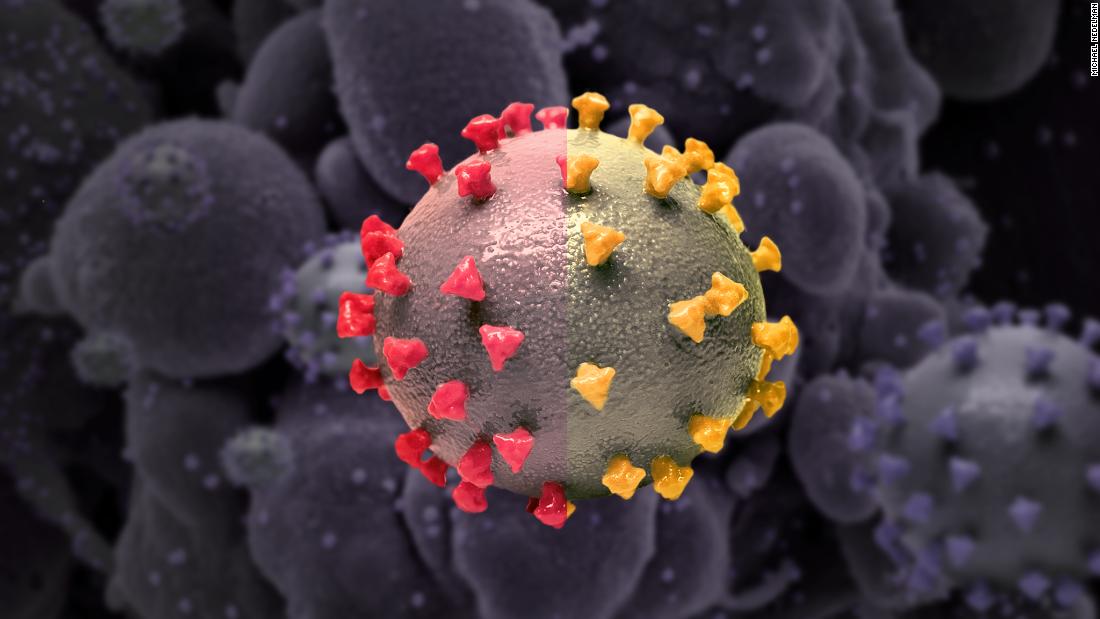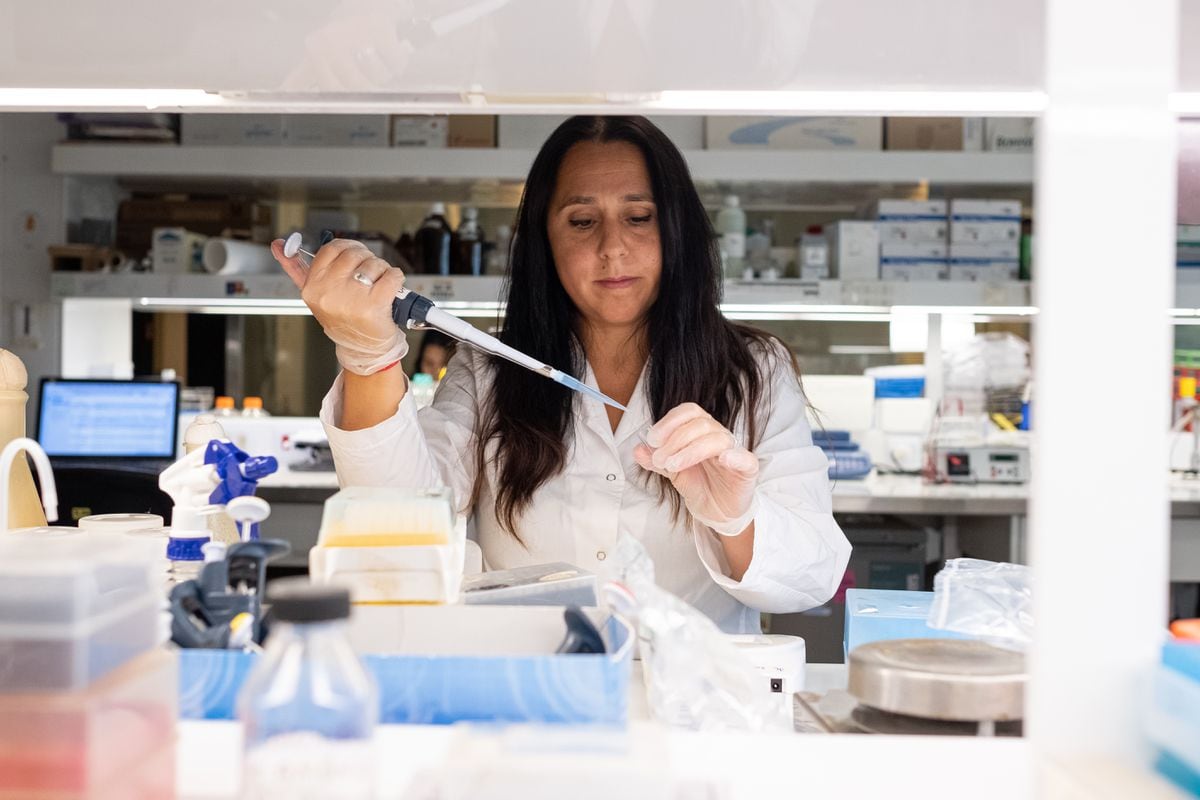Subvariant of omicron is the dominant one in the US, according to the CDC 1:49
(CNN) --
Stopping the next major coronavirus strain involves knowing where it might come from.
With the omicron variant, those answers remain a mystery: How did a variant appear so suddenly that looked so different from all of its older cousins? How to explain its jumble of mutations, many of which have rarely been seen in variants before? of interest?
"When that sequence of viruses started to emerge, it was really hard for me to imagine it taking off," said virologist Mehul Suthar of Emory University.
The alphanumeric soup also revealed BA.2, a faster-spreading omicron subtype that has become dominant in the United States.
Viruses change all the time, often in ways that really hurt your chances of survival.
But from time to time, those mutations can work in the virus's favor.
advertising
Can a new variant of the new coronavirus take us back to the beginning of the pandemic?
The WHO warns of the spread of a new variant of omicron 2:24
How do coronaviruses mutate and produce a subvariant?
The virus you sneeze or cough up may be slightly different from the one that infected you.
That's because viruses mutate, especially when their genetic code is made of RNA, a close cousin of our DNA.
"Because the virus replicates, there are errors reproducing its code," explained Dr. Mike Ryan, executive director of the World Health Organization's (WHO) Health Emergencies Program, at a March briefing.
"Most of those mistakes result in a virus that is not competent or just goes away."
But on rare occasions, these accidents can give the virus an advantage.
Maybe it will become more contagious.
Or maybe it becomes better to escape our immunity.
Sarah Cobey, an associate professor of ecology and evolution at the University of Chicago, explained in an op-ed in The New York Times this week that the transmissibility of the coronavirus will eventually peak.
However, it is likely that it will continue to evolve in ways that elude our immune response.
But not all mutations occur in the same way.
"Before omicron, I think most people in the field would say that we would see an immune escape through the accumulation of these mutations one by one," Cobey told CNN.
Over time and over the course of hundreds of infections, circulating viruses move further and further away from their ancestors in the evolutionary tree.
It is a process known as antigenic drift.
However, while this may explain variants that appear closer together on the evolutionary tree, such as omicron and its BA.2 branch, it does not explain how omicron appeared in the first place.
BA.2 subvariant more severe in children, Hong Kong study finds, though deaths are rare
The WHO gives recommendations for Latin America on omicron 0:35
"[The] omicron variant took everyone by surprise," Cobey said.
Marietjie Venter, a professor in the Department of Medical Virology at the University of Pretoria in South Africa, said it's unlikely a "slow change" led to omicron.
This would mean that the virus gradually evolved in a population that was not being monitored.
And South Africa, where many of the first samples of the omicron were identified, has a good surveillance program, he said.
So it would have been difficult for a variant like omicron to sneak up slow.
Instead, his appearance seemed curiously abrupt.
"Delta almost disappeared, and all of a sudden we saw omicron that was completely different," Venter said.
changing gear
In some cases, the viruses do not travel;
they change.
"Antigenic shift" is a more drastic change that can occur, for example, when viruses from animals reach humans or when two strains infect the same person and exchange genes.
Examples of the latter include rare instances of a hybrid virus containing stretches of delta and omicron genes.
Researchers at Helix, a company whose COVID-19 tests helped track down a number of variants, identified a handful of combined delta-omicron infections in the United States among nearly 30,000 coronavirus samples from late November to mid-February, when both variants were in circulation.
From those samples, the researchers identified 20 cases in which people had been infected with both variants at the same time.
One of these samples gave some evidence that the variants had swapped genes, albeit at low levels.
In addition, the researchers found two unrelated cases whose infections originated from hybrid viruses.
"There is currently no evidence that the two identified delta-omicron recombinant viruses are more transmissible between people compared to circulating omicron lineages," the researchers wrote.
"We will not call this a deltacron," Maria Van Kerkhove, the WHO's technical lead on Covid-19, said at the March briefing.
"That's not the terminology we're using."
How do you identify if a contagion is due to the omicron or delta variant?
At the time, Van Kerkhove said this combination appeared to be circulating "at very low levels" but cautioned that we should do more testing to get a clearer picture of its prevalence and spread, or lack thereof.
Still, the ability to swap genes has fueled the resurgence of multiple viruses, most notably influenza.
Influenza's genetic material is made up of multiple RNA segments that can shuffle back and forth when two viruses co-infect the same cell.
This is known as redistribution.
But the coronavirus "can actually do something that's even harder for us to understand," Cobey explained, referring to a process of gene swapping called recombination.
Unlike influenza, the coronavirus has a long chain of RNA as its genetic code.
When two strains infect the same cell, their replication machinery can occasionally jump from one strain to another.
This creates random "breakpoints" in your genetic code that come together.
While influenza shuffles entire cards, in a sense each coronavirus has only one card, but it is extra long and can be cut and pasted in various ways.
This means the virus has "a lot more evolutionary space that can be explored fairly quickly," Cobey said.
In the opinion piece, she and her co-authors describe how we may have seen only the tip of the iceberg when it comes to the number of possible mutations the virus can withstand and still be able to infect human cells.
Although it's not clear whether recombination is more likely than other pathways to generate the next variant of concern, Cobey said omicron in particular has lit the fire for scientists to understand its origins and the true breadth of viable mutations.
"That's the kind of divergence that's really hard to study and anticipate in the lab," he said.
The mystery of the omicron variant
No single explanation seems to fit perfectly into the backstory of the omicron.
But experts are tossing around various theories that may explain its sudden appearance last year.
The most popular opinion seems to imply an infection that persists for a long time in an immunosuppressed person.
"In fact, they develop antibodies, but they don't kill the virus," said Venter, who also chairs the WHO Scientific Advisory Group on Origins of New Pathogens.
That gives the virus plenty of time to accumulate changes, potentially changes that allow it to evade that person's antibodies and acquire immune resistance.
Another theory is known as reverse zoonosis, Venter added.
This refers to humans infecting an animal population, where the virus accumulates new mutations before returning to humans.
(In fact, this coronavirus has spread widely among the animal kingdom.)
Staying ahead of the virus isn't just a matter of anticipating its next move, experts say.
It's about finding ways to avoid threats and ultimately ensure the durability of our vaccines.
And it's not just this virus.
"Most of the pathogens that repeatedly infect us are able to do so because they escape some of our immunity to previous infecting strains," Cobey said.
"Viral evolution is actually a real problem in our lives that we may not formally recognize as such."
Covid-19








